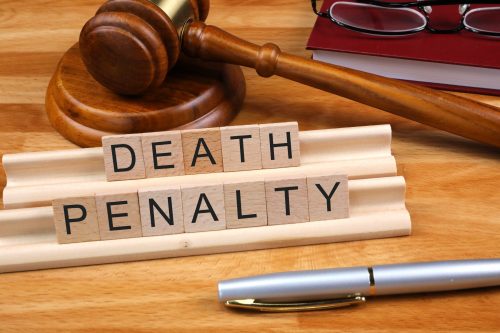
By Yana Singhal and Melinda Kukaj
ALAMEDA, CA – Death Penalty Focus presented a webinar this past week revealing Black and Jewish people were excluded from the jury in the Ernest Dykes murder trial in 1995, and that has now led to a federal judge ordering the Alameda County District Attorney’s Office to review all 35 death sentences from the past 30 years imposed in the county.
This decision was a result of a discovery made by DPF defense attorneys Brian Pomerance and Catherine Ria, who were co-counsels for Dykes, said actor, moderator and president of the Board of Directors of Death Penalty Focus, Mike Farrell
According to Farrell, Dykes was “sentenced to death in Alameda County in 1995…his death sentence appeal in April was the catalyst for the discovery by the Alameda County District Attorney’s Office of notes indicating that prosecutors in his case had excluded Jewish and Black jurors from his original trial.”
Added Farrell, the discovery “led a federal judge to order the Alameda County District Attorney’s office to review all 35 death sentences imposed in the county in the past 30 years for evidence that prosecutors may have systematically removed Black and Jewish people from serving on a jury.”
Pomerance, co-counsel on the case, said he did not believe the Ernest case would be as impactful as it was, noting that “attorneys prior to me had worked up claims that Jewish jurors were being struck improperly” and he “found more of that and also the Black jurors were being struck improperly in his case and those are claims that we’ve been litigating for many years.”
He added, the US Supreme Court continued to deny this matter, dubbed the “Batson challenges.”
For more than 20 years, the two defense attorneys have looked back at any biases that may have impacted past cases.
Pomerance noted a CA justice has said “they’re not handling Batson in cases properly in a case from a decade ago,” and how “in more than 100 cases over the past two decades, this court has found unlawful discrimination in jury selection,” questioning justice.
Pomerance added, “And 136 out of 138 Batson cases over the last 30 plus years, the courts found no problem and in the two they did, they were both Hispanic jurors. They have not found an improper striking of Black jurors for 35 years in California. So this is how this continues, this is how we get to this point 20 years later.”
In lieu of this, the attorney added, the judge in Mark Schmick’s case sentenced Schmick to death in 1990 and he challenged the prosecution’s removal of two Jewish jurors from the pool at his trial in ‘89 and again in 2005 when he appealed to the California Supreme Court, again alleging that two prospective jurors were excluded from his trial because they were Jewish.”
Despite all attempts, both appeals were rejected by “the trial court judge who accepted the prosecution’s explanation” or “unanimous ruling by the California Supreme Court,” according to DPF.
When asked about systematic exclusion of Black and Jewish jurors, Ann Kathryn Tria, another member in the webinar hosted by DPF, said “It was about the jurors and not the race or ethnicity of the defendants compared to the jurors,” and the issue was something even reaching federal courts.
After a further inquiry, it was noted that this phenomenon happens all over, but it is easier to tackle because investigators can “get the proof of it from the prosecutors themselves,” said Pomerance.
Tria stated she believes DA Pamela Price’s office is working with them, noting the most recent death penalty case was tried before her tenure. Pomerance said none of these cases were tried under Price’s watch.
According to Pomerance, Batson can take a lot of different forms, but “the problem is it’s trying to gain an advantage by getting rid of people based on their group and not judging them by the people they are, and that’s the harm, and that’s what you’re not allowed to do.”
Additionally, Tria specifically noted that during juror questionnaires, sometimes individuals will be brought in and questioned. However, there was a distinguishable notice in this case based on how individuals were treated based upon their race.
However, Pomerance notes shining a light on this issue is incredibly important to move towards progress, stating that “seven out of eight potential Black jurors were struck. Six out of six potential Jewish jurors were struck,” and added these statistics are not unique and happen in many other cases.
Tria emphasized that “this isn’t just taking someone into court and railroading them to get a conviction or a death sentence. We should want our prosecutors to be, as Brian said, looking for justice and upholding the law and following the Constitution in order to get a conviction.”
Pomerance added, “Pam Price is looking at a recall election in November. She’s going to be on the ballot for a recall election in November, and so part of, if I were a voter in Alameda County, one of my questions would be, do I want this kind of practice that went through at least three administrations before her, right?”
At the end of the webinar, it was noted by Farrell they “want to see just responses to inappropriate behavior in society on the parts of people who, for whatever reason, choose to step out of line, but none of us want to see this kind of junk where prejudice and bias and twisted thinking and an attempt to get over is ruling the day.”